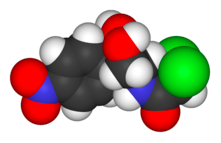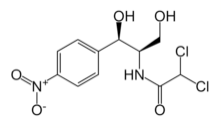Introduction | History | How It Works
Uses | Typhoid Fever | Side Effects
Synthetic Production | U.S. and the West

For nearly 2500 years, cases of typhoid fever have been documented around the world. From the epidemic’s origins in Greece, to its appearance in the industrializing United States, and finally to its current presence in underdeveloped nations, typhoid has become a problematic illness. The disease is easily prevented and well-treated, but in areas of the world that suffer from poor economies or unsanitary conditions, typhoid is a common occurrence and often leads to permanent health problems or death. In the past century, however, the creation of many antibiotics has enabled wealthy countries, like the United States, to combat the disease, and new medical technology has allowed these drugs to be reproduced for the masses.
Chloramphenicol, one of the first antibiotics used to treat typhoid fever, is one drug that is produced synthetically today. Because it is produced synthetically, chloramphenicol is readily available to under-developed nations who are in desperate need of a treatment for typhoid. The drug, however, has recently become controversial because of its dangerous side effects, which could result in the development of rare and untreatable illnesses such as leukemia and aplastic anemia. Due to the possibility of these very serious side effects, many underdeveloped countries have decided to cease the use of chloramphenicol to treat typhoid fever.

